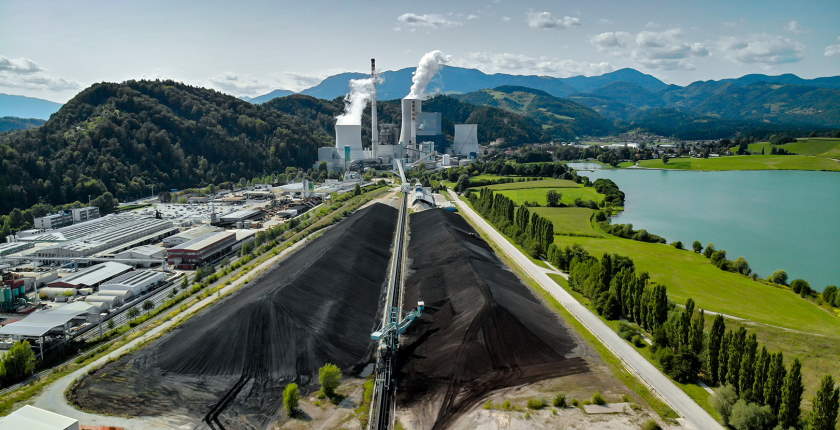
Termoelektrarna Šoštanj (photo: HSE)
The Ministry of Infrastructure has launched a public debate on the draft coal phaseout strategy and accompanying environmental impact assessment. The document includes three scenarios for both coal regions – Savinjsko-Šaleška, and Zasavje.
The draft national strategy for a coal phaseout and the restructuring of coal regions in line with the just transition principles proposes scenario A for the Savinjsko-Šaleška (SAŠA) region, implying a coal phaseout by 2033, scenario C for Zasavje, with a so-called harmonious transformation, the Ministry of Infrastructure said on its website.
The only operational coal-fired power plant in Slovenia – Termoelektrarna Šoštanj (TEŠ), is located in the SAŠA region, with the fuel supplied by Premogovnik Velenje. The Trbovlje-Hrastnik mine in Zasavje is closed and the area is awaiting rehabilitation. Measures proposed for Zasavje are aimed at the improvement of the quality of life together with a boost for entrepreneurship and local companies.
Coal phaseout by 2033 has the lowest negative impact on the environment
In the draft environmental impact assessment for the coal phaseout strategy, issued in late December, the fastest coal phaseout was proposed – by 2033, as the one with the lowest negative impact on the environment in the Savinjsko-Šaleška region.
After receiving the opinion of the Ministry of the Environment and Spatial Planning, the updated draft strategy was prepared, the Ministry of Infrastructure said.
Why is scenario A proposed by the working group?
For the purpose of the public debate, the governmental working group, which includes representatives of various ministries, has chosen a scenario for a coal phaseout by 2033, the draft strategy reads.
Scenario B for SAŠA region envisages a coal phaseout by 2038, and scenario C by 2042.
The working group explained a greater amount of European Union funding is expected for a just transition in the financial periods 2021-2027 and 2028-2034 and that a delay could endanger Slovenia’s ability to obtain the funds.
The anticipated rise in CO2 prices may disturb the financial sustainability of Premogovnik Velenje coal mine and TEŠ power plant
It added that increased greenhouse gas emission reduction targets at the EU level by 2030 (and 2040) and the upcoming review of the EU Emissions Trading System (EU ETS) would push CO2 prices up, and pointed out that the expenses already pressure the financial sustainability of the Premogovnik Velenje coal mine and TEŠ power plant. The two firms are subsidiaries of state-owned Holding Slovenske Elektrarne (HSE).
In the two remaining scenarios, TEŠ would reduce output, further affecting HSE’s finances, the draft strategy reads.


















Be the first one to comment on this article.